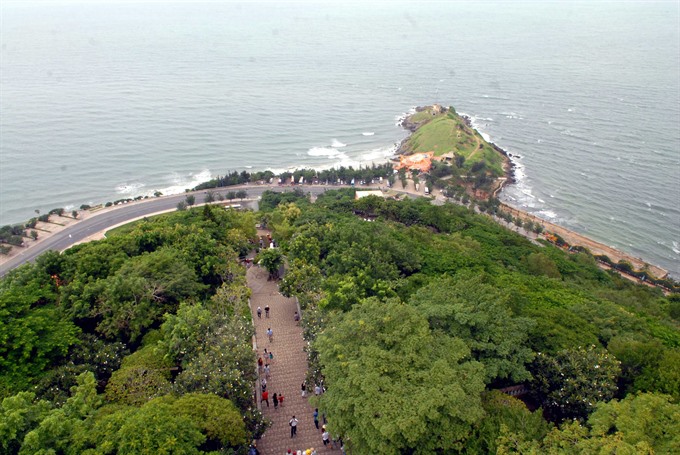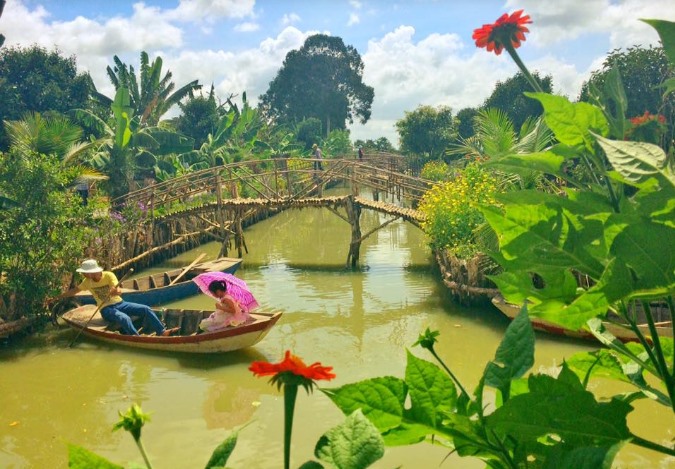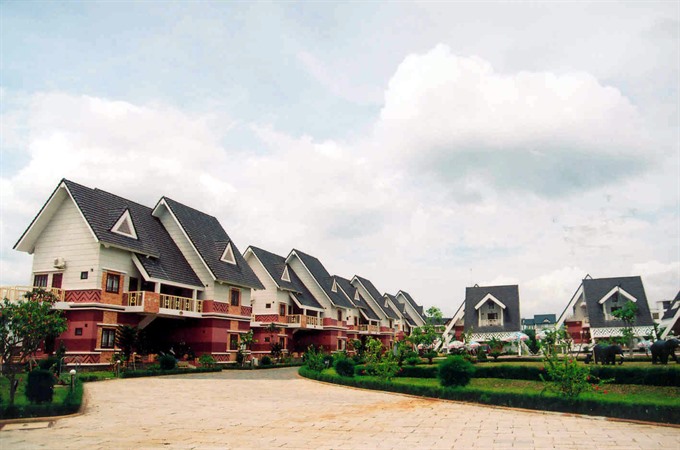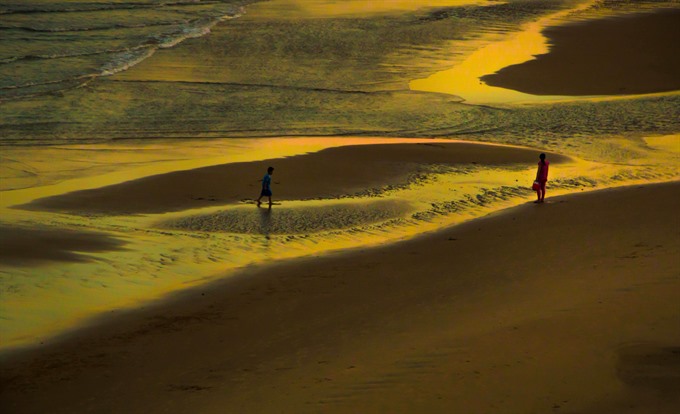 Features
Features

Eco-tourism offers a valuable source of revenue for the southern coastal province of Bà Rịa-Vũng Tàu, but challenges such as pollution remain.
 |
| Paddle bikes: Tourists join a tour at Bưng Bạt eco-tourism spot in Bà Rịa Vũng Tàu Province. — Photos vntrip.vn |
Eco-tourism offers a valuable source of revenue for the southern coastal province of Bà Rịa-Vũng Tàu, but challenges such as pollution remain.Văn Hào Phương reports.
BÀ RỊA-VŨNG TÀU — New eco-tourism offerings that include visits to mangrove forests and aquaculture breeding areas promise great potential for the southern coastal province of Bà Rịa-Vũng Tàu to boost its development.
The province’s large mangrove forest areas—home to endemic wildlife such as black tigers and parrots and many fertile river mouths ideal for breeding marine species—are now the key to a master plan for developing green community tourism integrated with cultural activities.
Under the plan, the province targets to welcome about 8.6 million visitors by 2025, gross an annual average growth rate of 11 to 13 per cent, increase the number of high-standard hotel rooms to 16,000 and create about 38,000 jobs for local people.
However, experts and local authority officials have warned that an increase in deforestation and environmental pollution due to a boom in industrial zones along the rivers are hindering the appeal of eco-tourism in the province.
 |
| Surf and sand: Vũng Tàu Beach is one of the most attractive tourism areas in Bà Rịa - Vũng Tàu Province. VNA/VNS Photo |
They said the issue had become more urgent than ever and might threaten the province’s master plan for tourism development if no intensive measures are undertaken to focus on solving the environmental issues.
Nguyễn Hữu Thi, an official from the provincial Department of Agriculture and Rural Development’s division of aquaculture, said that for long time, the province’s mangrove areas had been reduced due to uncontrolled violations of forest protection rules.
Thi quoted statistics from the provincial authorities in charge of resources and the environment as saying that the total area of mangrove forests had decreased in the last five years from 5,100ha to about 2,250ha.
The main cause, according to the official, was an increase in deforestation and pollution from nearby industrial zones.
Coastal aquatic product processing plants everyday discharge untreated waste water into the environment, seriously threatening the mangrove ecosystem and adjacent land areas. Water pollution in the areas also resulted in rapid salinity intrusion, coastal erosion and environmental degradation, said Thi.
He proposed that to achieve the goal of eco-tourism development, provincial authorities should prohibit all types of exploitation in the mangrove forests.
“No exploitation or trading should be allowed in mangrove forests for any purpose,” he said.
The forests should also not be transferred to other use purposes and violations should be strictly punished, according to Thi.
Authorities should encourage local households to take part in reforestation programmes.
“Households dependent mainly on mangrove ecosystems, including those raising shrimps, crabs, molluscs, shrimp and fish in the mangrove forest, should receive priority support and at the same time be under the management and control of the authorities,” said the official.
Thi suggested the province re-evaluate all mangrove forests along the coast, downstream of the rivers such as Cỏ May, Rạng, Dinh, Chà Và, Rạch Tranh and Mỏ Nhát, and estuaries including Ông Bền and Gành Rái to set up a comprehensive database and detailed classification for tourism development projects in the areas.
 |
| Such great heights: Nghinh Phong Cape, a charming tourist spot in Vũng Tàu City. VNA/VNS Photo Mạnh Linh |
In a conference held by the provincial People’s Committee as part of the Bà Rịa-Vũng Tàu Province Sea Festival held early last month, experts, researchers and officials also discussed solutions to develop tourism and protect the environment.
At the conference, experts suggested creating a model of sea tourism without plastic bags and applying new technologies for environmental protection.
Đặng Sơn Hải, deputy chairman of the province’s Department of Natural Resources and Environment, said the province should add more legal regulations to clarify responsibilities of tourists and the need for funds to support environmental protection.
Meanwhile, Trần Anh Tuấn, head of the HCM City’s Institute for Development Studies, said the province needed a clear direction to develop its tourism industry. In addition, the tourism sector should collaborate with other departments in the province to ensure consistency in development.
Tourism potential
Bà Rịa-Vũng Tàu, home to a 305km-long coastline, is one of the leading tourism hubs in Việt Nam. With cool and dry temperature all year round, it is an ideal place for sea sports tourism and the development of deluxe seaside resorts. Meanwhile, Vũng Tàu City, lying on a peninsula of the same name, is the tourist and commercial centre of the province.
A number of beautiful beaches, such as Hồ Cốc, Bãi Sau and Đầm Trầu have become magnets for visitors at home and abroad.
The province is also famous for many cultural and historic relics.
It also has three ports - the Sài Gòn Việt Nam and SP-PSA international ports and Tân Cảng-Cái Mép port - that are capable of accommodating international cruise ships.
Phạm Ngọc Hải, chairman of the Bà Rịa-Vũng Tàu Tourism Association, said the province had focused all resources to become a centre of tourism, relaxation and entertainment in the region.
The province has invested in five tourism areas with varying functions, such as sports, entertainment, culture, trade and eco-tourism
The director of the provincial tourism department, Trịnh Hàng, said beaches and entertainment centres in Vũng Tàu City are undergoing cleaning and improvement to attract additional visitors.
The department will also suggest the provincial authorities develop incentive policies for tourism investment, accelerate the development of tourism projects, complete a tourism master plan and strengthen tourism promotion and connectivity.
The province has also enhanced efforts to attract investment into major and high-end tourism projects while encouraging businesses to tap potential markets.
Many tourism complexes have gained prestige such as Hồ Tràm Strip and Six Senses Côn Đảo. The province also has high hopes for Paradise Vũng Tàu, another complex that is taking shape.
Considering tourism as a drive for local development, Bà Rịa-Vũng Tàu re-established the provincial Department of Tourism in early 2017. Later the same year, the provincial Party Committee issued a resolution on developing high-quality tourism with a view to upgrading tourism infrastructure, improving product and service quality, and ensuring a safe, civilised and friendly tourism environment.
 |
| Fresh air: A view of Tứ Phương Thất Đảo eco-tourism resort in Long Phước Commune, Bà Rịa-Vũng Tàu Province. |
 |
| Through the mist: A view of Bình Châu Mineral Spring, part of the Bình Châu Resort in Xuyên Mộc District. VNA/VNS Photo Minh Quang |
 |
| Just like home: Part of the Sơn Thủy Resort in Vũng Tàu City. VNA/VNS Photo Anh Tuấn |
 |
| Golden sands: Bãi Sau, or Thùy Vân Beach in Vũng Tàu City, is famous for its soft sand and sea waves bursting along the coast, constantly providing beautiful, enchanting views for visitors. VNA/VNS Photo Duy Khương |
With a view to turning tourism into a spearhead sector, Bà Rịa-Vũng Tàu has helped travel agencies upgrade their tours to improve variety and quality.
In late December 2017, a group of nearly 20 cruise tourists toured markets in the province after landing at Cái Mép Port.
They showed their interest in the southern specialties of Long Điền Market while expressing excitement when making and trying bánh tráng, a southern traditional speciality, which includes pork, shrimp and aromatic herbs wrapped in rice crepe, during a trip to a village in Long Phước Commune of Bà Rịa Town.
Trần Ngọc Cường, director of the Phước Lập Co-operative – an investor of the Bưng Bạc eco-tourism site in Long Phước Commune – said the site, covering more than 1.7ha of land, was used for fish, fruit and vegetable farming in the past.
Realising the area’s eco-tourism potential, his co-operative built and upgraded facilities to serve visitors. The site’s pristine and tranquil landscape is now a magnet for domestic and foreign tourists.
In the summer of 2017, tourism businesses in the province experienced 10-30 per cent growth in terms of visitor numbers and revenue, compared to the same time in 2016. The accommodation occupancy rate was high not only during weekends but on weekdays, as well.
In the first half of this year, the province welcomed approximately 6.5 million tourist arrivals and earned VNĐ2.8 trillion (around US$123 million) from tourism activities, according to the provincial Department of Tourism. — VNS